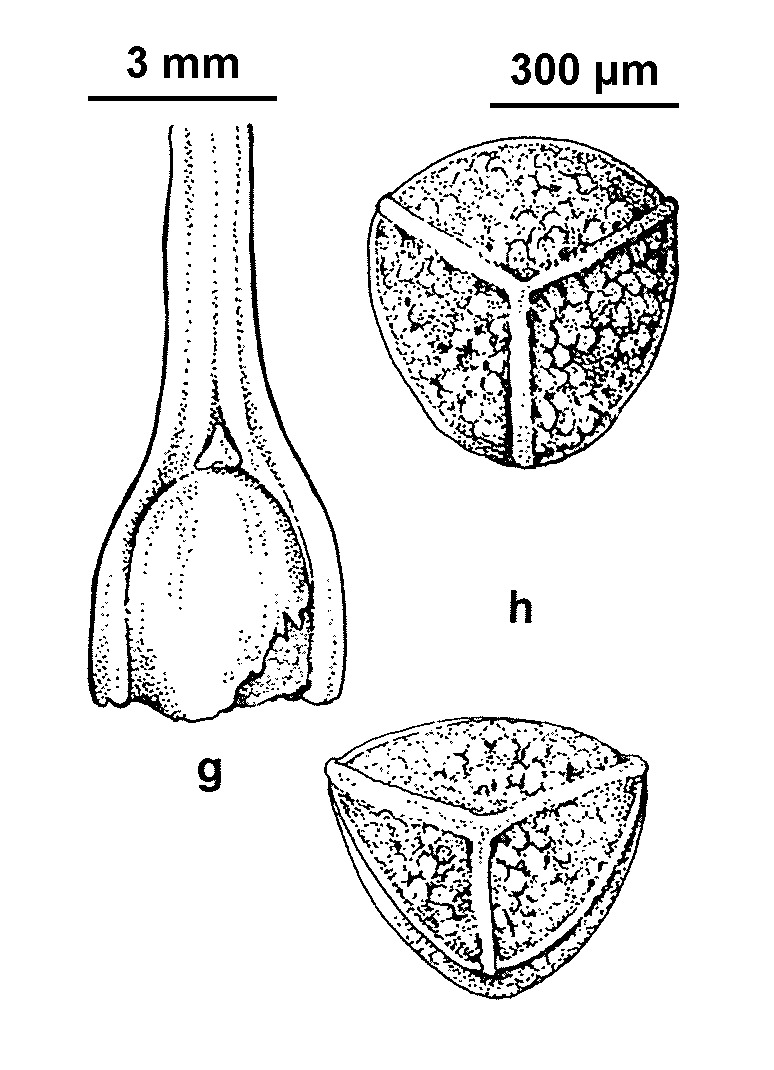Isoetes muelleri
A.BraunLeaves erect or somewhat lax, 5–30 cm long, apex narrowly cylindric, gradually wider towards base; bases abruptly wider, flattened, loosely overlapping, spoon-shaped, lateral margins pale and papery. Megasporangia orbicular to elliptical, 3–6 mm long, wall pale, thin, sporangium usually covered completely by membranous velum; megaspores 50–200 per sporangium (in outer leaves), whitish-grey, dimorphic, variable in size and ornamentation; larger spores almost spherical; smaller spores flatter, almost hemispherical; surface markings on all spores rounded (not angular), with few tubercles, markings sometimes absent. Microspores absent; inner leaves sterile.
LoM, MuM, Wim, GleP, VVP, VRiv, RobP, MuF, GipP, WaP, Gold, CVU, GGr, DunT, NIS, EGL, EGU, HSF, HNF, MonT, VAlp. Vic. -MMAL, LMAL, WIM, GR, RIV, VOLC, EHL, SNOW, EG (ACDHMNRVWZ)- all States. Usually submerged in rock pools, slow-moving streams and small lakes, where growth can continue year-round, but also known from temporary water, growing from late autumn to spring.
The endemic Tasmanian species Isoetes humilior F. Muell. ex A. Braun has thick, rigid, dark leaves crowning a corm with two rather elongate lobes, and only smooth-walled, large megaspores (Marsden 1976).
Entwisle, T.J. (1994). Ferns and allied plants (Psilophyta, Lycopodiophyta, Polypodiophyta). In: Walsh, N.G.; Entwisle, T.J., Flora of Victoria Vol. 2, Ferns and Allied Plants, Conifers and Monocotyledons, pp. 13–111. Inkata Press, Melbourne.
 Spinning
Spinning



